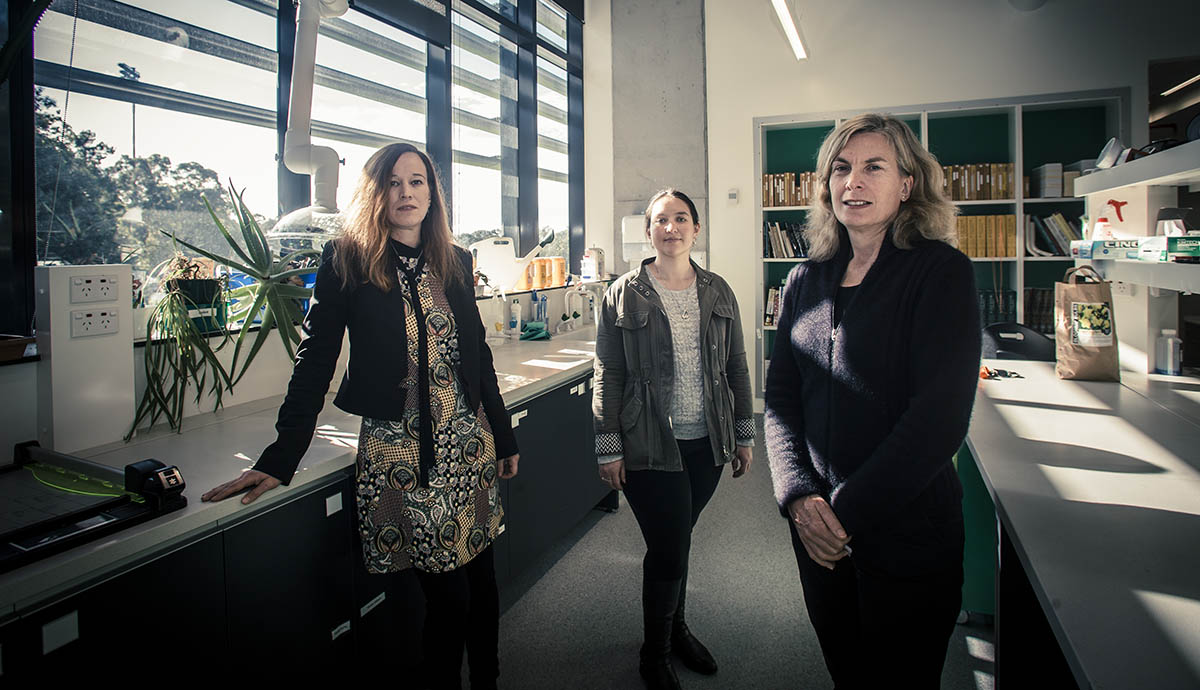July 31, 2017
Drones used to assess health of Antarctic vegetation
New method faster, more efficient and less damaging to the environment
A team of researchers from the University of Wollongong (UOW) and the University of Tasmania has developed a new method for assessing the health of fragile Antarctic vegetation using drones, which they say could be used to improve the efficiency of ecological monitoring in other environments as well.
The researchers have written about their method in an article published in Methods in Ecology and Evolution, a scientific journal of the British Ecological Society. The UOW researchers involved in the project were Professor Sharon Robinson, Ms Diana King, and Dr Johanna Turnbull from the Centre for Sustainable Ecosystem Solutions.
Antarctic plants can be important indicators of subtle changes in environmental conditions, including climate change. Traditional ground-based assessments of vegetation health are, however, not ideal in Antarctica, as they can destroy the vegetation and are physically demanding in the harsh weather conditions.
Professor Robinson said the study found drone-based monitoring of vegetation health produced similar results to traditional techniques, but with much greater efficiency and with no damage to the vegetation.
“Drones are a powerful tool for monitoring fragile Antarctic vegetation,” Professor Robinson said.
“They could be used to provide timely warnings about specific environmental stress events, as well as monitoring the longer-term impacts of climate change.
“These methods could also be adapted to monitor the health of other small-stature, patchy plant communities, including in alpine or desert regions.”
The researchers found that drones equipped with sensors were able to detect vegetation health indicators more accurately than satellite imagery.
Mosses are one of the key Antarctic vegetation types that need to be monitored. However, they tend to occur in patches among rocks, ice and soil, making it important that the imagery used to assess their health is as accurate and spatially detailed as possible.
Satellite imagery with one of the highest resolutions available for the Antarctic region produced images with individual pixels of 2.2 metres, while the new drone-based method produced vegetation health maps with individual pixels of 5 centimetres.
“We found that while both methods could provide accurate spectral information, the satellite pixels were too big and too mixed to be useful with the patchy Antarctic vegetation,” Professor Robinson said.
“With our new drone based method, vegetation health can be measured much more accurately, because the pixel size is similar to the size of individual patches of Antarctic moss. This means we acquire pure moss spectral signals and can determine how healthy these mosses really are.”
The researchers concluded that drones were a cost-efficient method of mapping vegetation health in remote or dangerous areas, and could be used even when full cloud cover prevented the use of imagery from satellites and aircraft.
“Unmanned aircraft system advances health mapping of fragile polar vegetation” by Zbyněk Malenovský, Arko Lucieer, Diana H. King, Johanna D. Turnbull, and Sharon A. Robinson is published in Methods in Ecology and Evolution. The study was funded by an Australian Research Council Discovery grant and Australian Antarctic Science grants.
